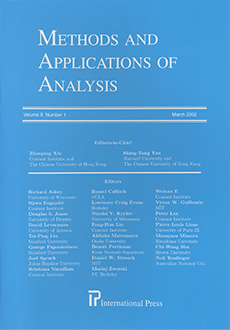Abstract
The motion of a collection of vertical strings subject to horizontal linear vibrations in the plane can be described by a system of first order nonlinear conservations laws. This system -that we call the Chaplygin-Born-Infeld (CBI) system- is related to Magnetohydrodynamics and more specifically to its shallow water version. Then, each vibrating string can be interpreted as a magnetic line. The CBI system is also related to the Born-Infeld theory for the electromagnetic field, a nonlinear correction to the classical Maxwell’s equations.
Due to the linearity of vibrations, there is a priori no mechanism to prevent the strings to cross each other, at least for sufficiently large initial impulse. These crossings generate concentration sin- gularities in the CBI system. A numerical scheme is introduced to maintain order preserving strings beyond singularities. This order preserving scheme is shown to be convergent to a distinguished limit, which can be interpreted, through maximal monotone operator theory, as a vanishing viscosity limit of the CBI system. Finally, models of pressureless gas with sticky particles are revisited and a new formulation is provided.
Citation
Yann Brenier. "Order preserving vibrating strings and applications to electrodynamics and magnetohydrodynamics." Methods Appl. Anal. 11 (4) 515 - 532, December 2004.
Information





